What is a Fashion Style?
Any fashion style is a combination of clothes, footwear, and accessories depicting patterns, motifs, colours, shapes, and fabrics belonging to specific cultures, subcultures, or social movements, adapted to or mixed with the latest fashion trends.
Despite being used interchangeably in fashion parlance, fashion styles are not fashion trends or aesthetics but unique ways of dressing.
Garments, footwear, and accessories with similar aesthetic roots – shapes, silhouettes, patterns, motifs, symbols, colours, and materials – can be grouped into stylistically similar outfits and described as fashion styles.
Groups, communities, and subcultures adopt and reshape fashion styles to showcase their values, beliefs, group belonging, social status, and lifestyle.
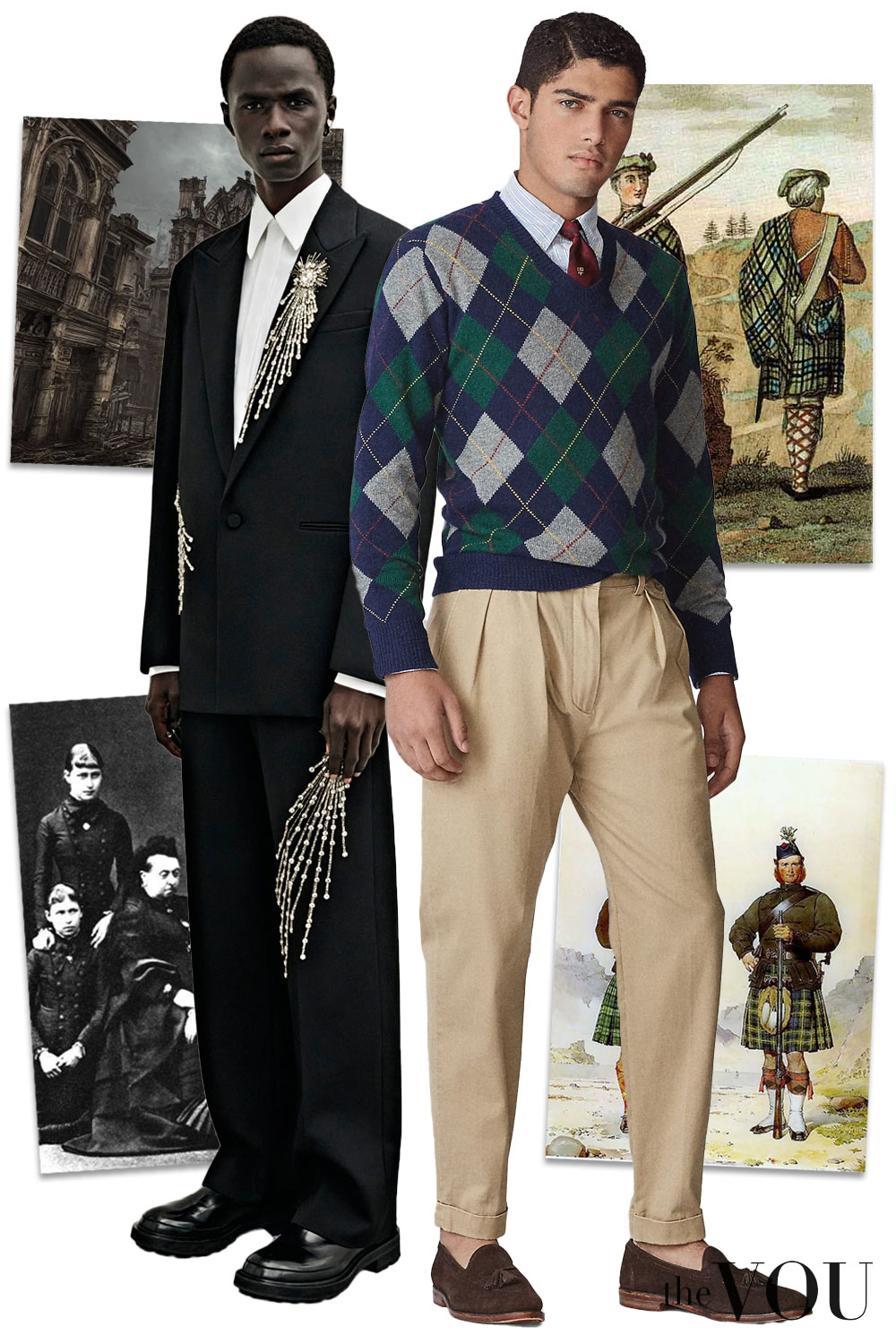
For an outfit to be catalogued as belonging to or representing a particular fashion style, the composing clothes, footwear, and accessories must share aesthetics and motifs representative of the subculture it attempts to portray.
That being said, someone’s look or way of dressing could blend different fashion styles, not belonging to any particular subculture, colloquially called their “personal style.”
The Origin of Style
According to Hegel’s Philosophy of History, ‘style’ originates from the Latin ‘stilus,’ – a writing instrument – and was used to describe architecture, art performances, or visual expressions of a subculture (fashion choices).

The concept of style was first used in architecture to describe design ways, such as the Ciceronian, Baroque, or Romanesque styles, eventually expanding to describing forms of art and fashion.
As such, one’s choice of a specific fashion style expresses an intention to depict a particular character or social role at a given occasion.
According to the book Gothic: Literary Sources and Interpretations Through Eight Centuries, the Gothic style originated from the idea that the Roman Empire’s destroyers looked and behaved barbarically.
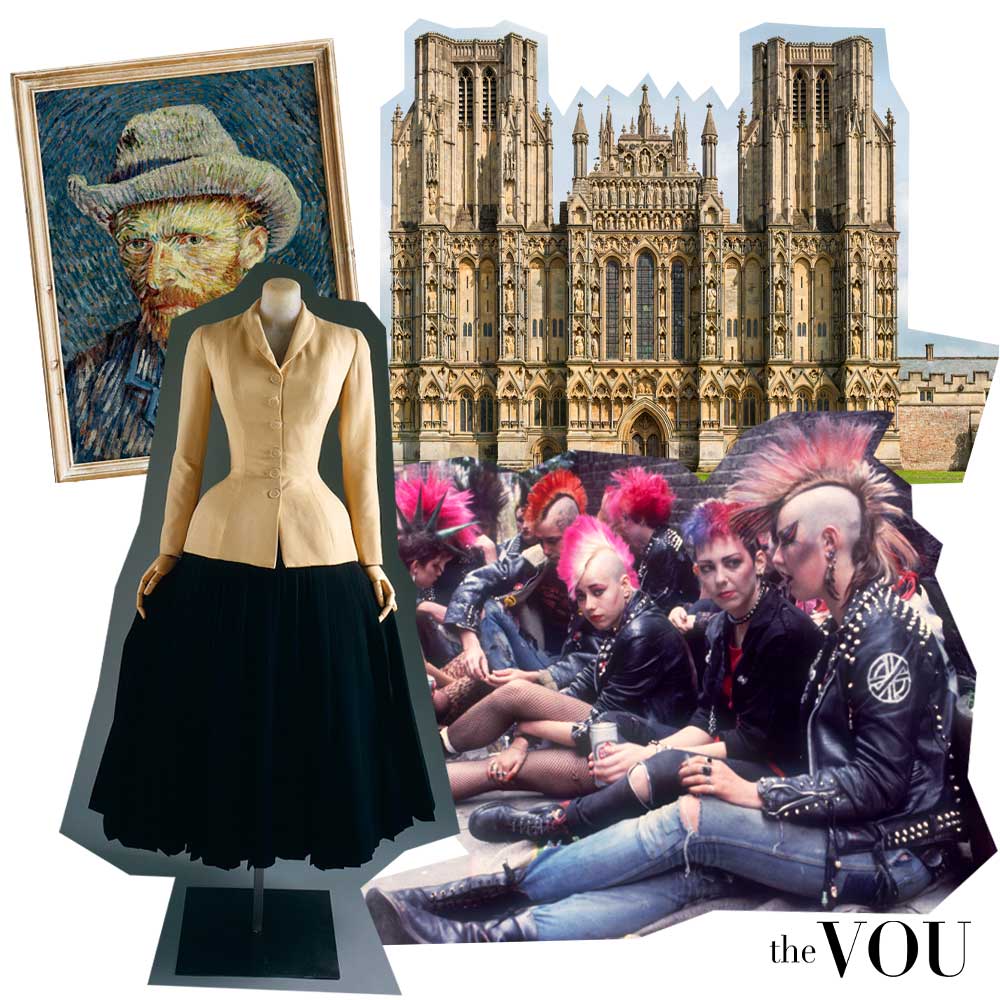
According to Otto Kurz, the ‘Baroque’ style, meaning ‘bizarre’ or ‘absurd,’ resulted in a conflation of miscellaneous expressions.
‘Rococo’ was coined in 1797 by Jacques-Louis David’s pupils as a term of derision for the meretricious taste of the age of Pompadour.
‘Romanesque’ emerged around 1819 as a term denoting “the corruption of the Roman style and mannerism showcased by its impact on the ‘purity’ of the Renaissance.
The first usage of style as an expression of a collective spirit and subcultures’ visuals can be traced back to early 1800 romantic philosophy, notably Georg Wilhelm Friedrich Hegel’s ‘Philosophy of History lectures at the University of Berlin:
“A nation’s art, no less than its philosophy, religion, law, mores, science, and technology, will always reflect the stage in the evolution of the spirit, and each of these facets will thus point to the one common center, the essence of the age.”‘
In straightforward term, “Style” describes distinctive ways of performing an act and is present in various applications, such as a style of rock music, French cooking, Gothic suits, or Victorian architecture.

Fashion Styles Origin
Fashion styles emerge as groups of people and communities wear garments, footwear, and accessories depicting aesthetic patterns, motifs, materials, colours, cuts, sewing, and drawings belonging to or depicting past subcultures.
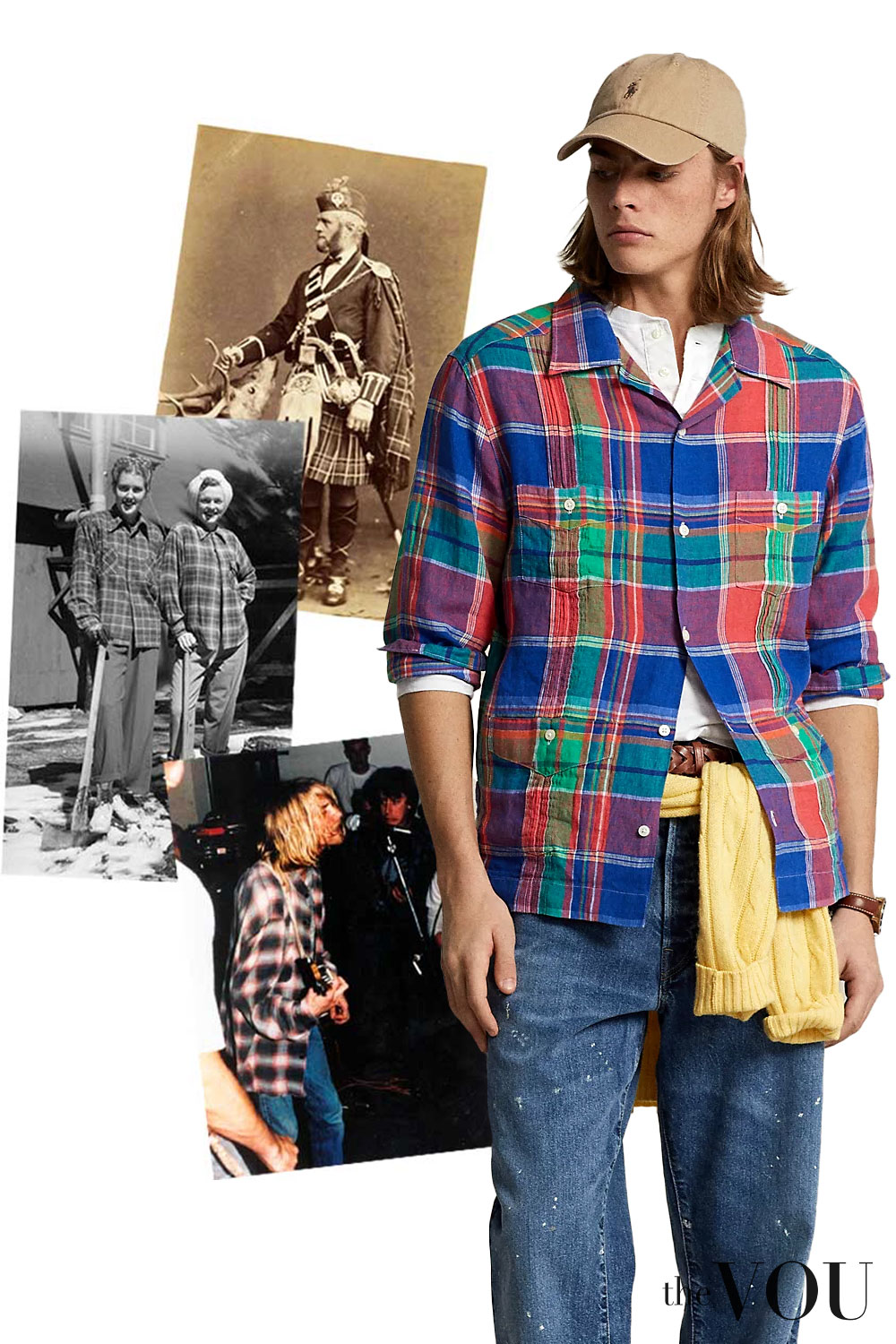
For example, whether the Gothic clothing style uses patterns from medieval feudalist architecture is not questioned, but if historians can find and record these connective unitary aesthetics.
What distinguishes all styles from casual connections is the always present a priori character and, as Adolf Loos, an Austrian pioneer of modern architecture, puts it:
“If nothing were left of an extinct race but a single button, I would be able to infer, from the shape of that button, how these people dressed, built their houses, religion, art, and mentality.”
In fashion design, the most common way of depicting a style is through the artistic mix of clothing and accessories, which incorporate patterns, motifs, shapes, cuts, and colours belonging to a subculture or more into outfits.
French philosopher and semiotician Roland Barthes states:
“fashion style is a form of aesthetic language and a mode of communicating statements using the grammar of fashion.”
Fashion Style vs. Personal Style
It is essential to observe that fashion styles differ from personal styles.
The fashion world has recorded and recognised around 50 fashion styles, catalogued by decade of appearance, aesthetic roots, subcultural origins, and composition of clothes, accessories, and footwear.
While each fashion style has a different origin and aesthetic roots, they’re all influenced by cultural and societal changes and new fashion trends.
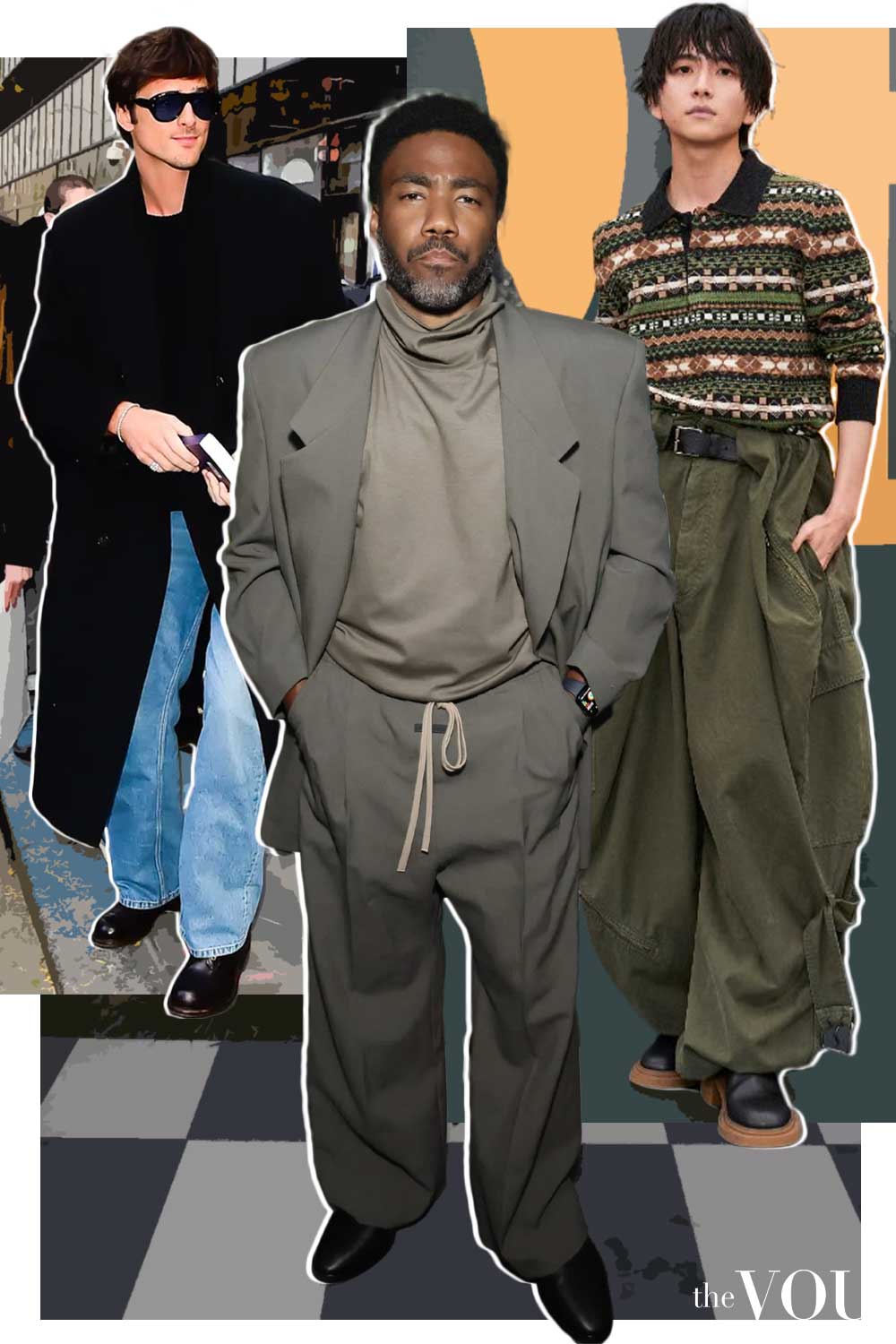
Subcultures create fashion styles by adopting, using, and blending clothes, footwear, and accessories with aesthetics, patterns, and motifs from previous subcultures into new visual identity forms.
These well-established fashion styles resurface yearly, either as perfect interpretations of the past, reimagined in modern variants, or as part of fashion trends and fads.
On the other hand, your own style is how you combine and like to wear your clothes, whether unbuttoned shirts or shoes without laces.
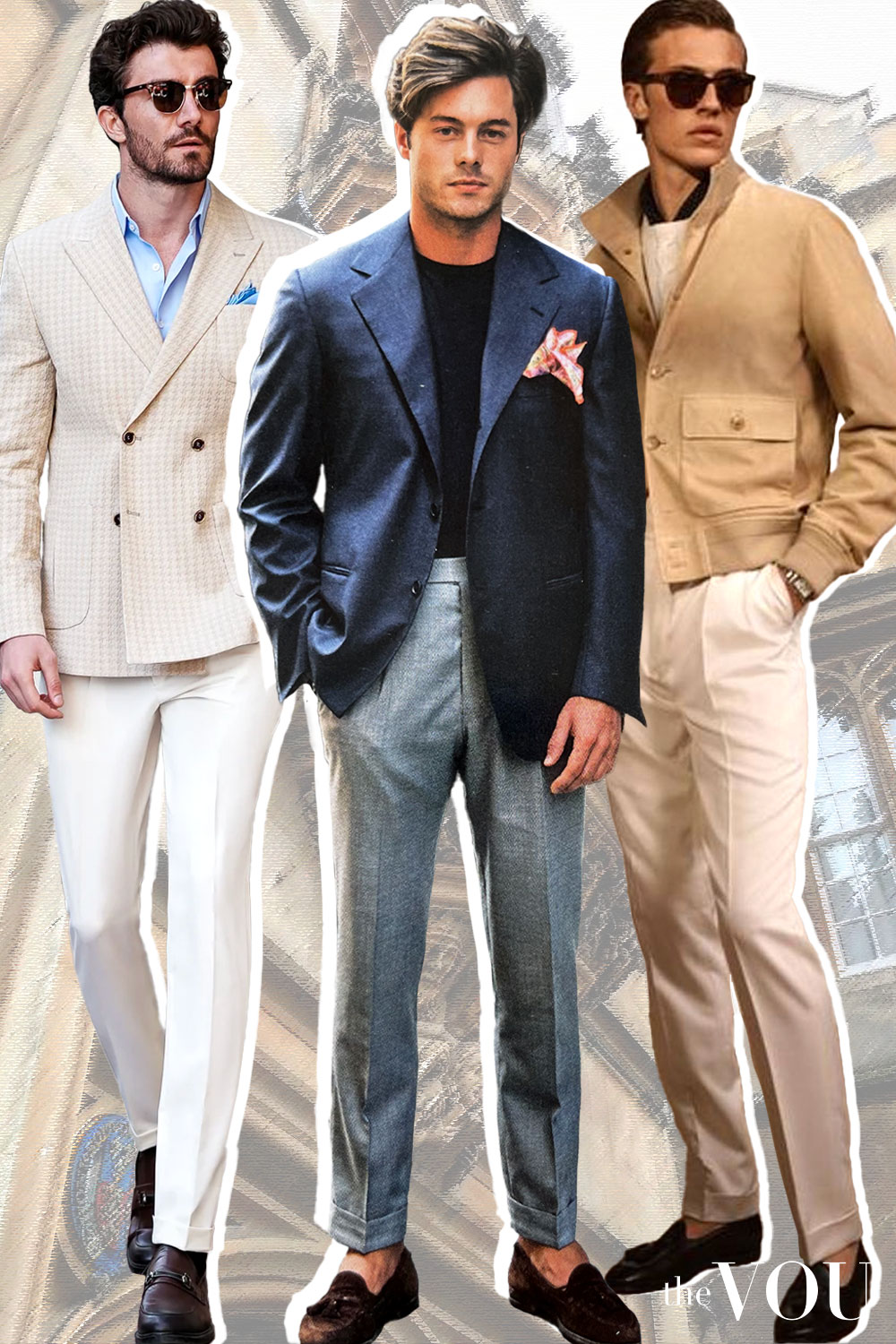
Nevertheless, the clothes and accessories that form your outfit will always comprise aesthetic elements (patterns, motifs, colours, and materials) representative of a subculture and, thus, their fashion style.
Fashion Styles Historical Overview
From ancient Rome to the medieval Caliphate and the Industrial Revolution, most ways of dressing emerged out of necessity.
However, intentionally dressing in specific styles started in the Victorian era.
From the ‘Roaring Twenties,’ new fashion styles emerged in waves matching economic changes or social unrest.
From the Victorian era to the 2020s, each decade is represented by the five most representative fashion styles and their aesthetic roots (patterns, motifs, symbols, materials, and colours).
Victorian Era (1837-1901)
Victorian fashion – a dressing style influenced by the British monarchy and comprised of frock coats, high collars, cravats, and waistcoats.
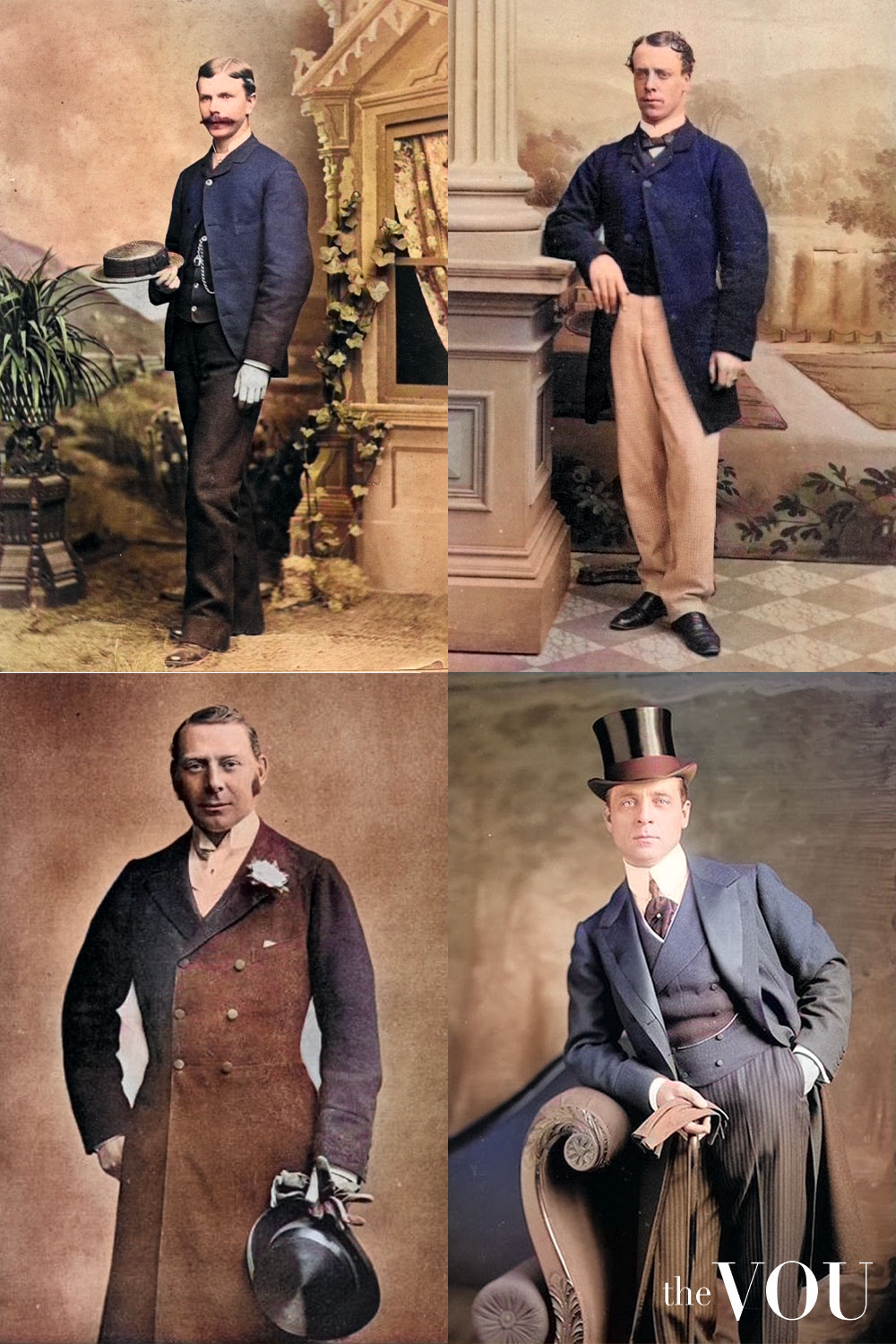
Art Nouveau – tailored suits with artistic details and nature-inspired patterns.
Sportswear Apparel – clothing with functional cuts inspired by emerging sports activities such as tennis and golf.
Day and Evening Looks – separate outfits for day/night with corresponding materials like wool for day and fine silk for evening.
Mourning Attire – black suits, top hats, and accessories in dark tones reflect the social importance of mourning.
Edwardian Era (1901 – 1914)

Edwardian – high collars, morning coats, top hats, and detailed tailoring with aesthetic roots in the British nobility and King Edward VII’s attire.
Oriental – smoking jackets with oriental motifs from exotic materials and luxurious fabrics inspired by the growing fascination with Far East cultures.
La Belle Epoque – well-fitted suits with artistic details influenced by the art nouveau movement.
Tailored – tailored suits and military-inspired jackets made from expensive fabrics.
Art Deco Artisanal – handmade garments with artisanal details in geometric shapes and rich colours, signalling the approach of the Roaring Twenties.
1920s

Jazz Age – wide-leg trousers and double-breasted suits reflecting the Jazz Age freedom and emancipation.
Art Deco – suits with geometric patterns and metallic motifs reflecting urbanization and modernity.
Gentleman’s Classic – well-tailored suits in classic cuts showcasing practical elegance.
Formalwear – pinstriped tailored suits assorted with fedoras influenced by the growing Italian and Irish gangster look.
Hollywood Glamour – Tuxedos and dinner jackets from fine wool and silk.
1930s
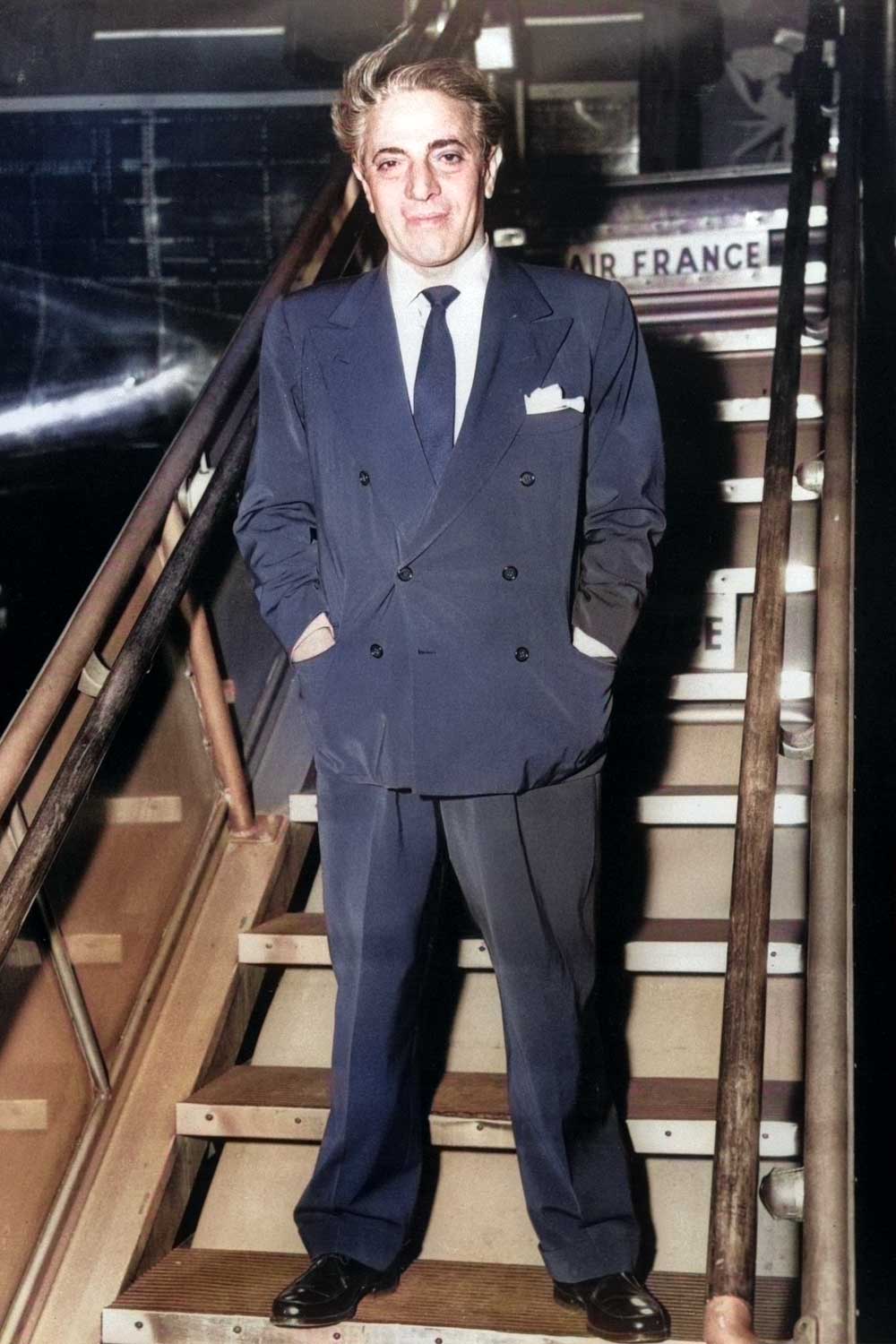
Hollywood Glamour Continued – elegant suits in fine wool and silk reflecting the stars of the cinema.
Escapist – resort wear and tropical suits in exotic prints and light fabrics as a way to minimize the Great Depression.
Utilitarian – functional garments from sturdy fabrics reflecting the global economic hardship.
Surrealist – suits and accessories with abstract motifs, mind-bending prints, and colours representative of Salvador Dalí.
1940s
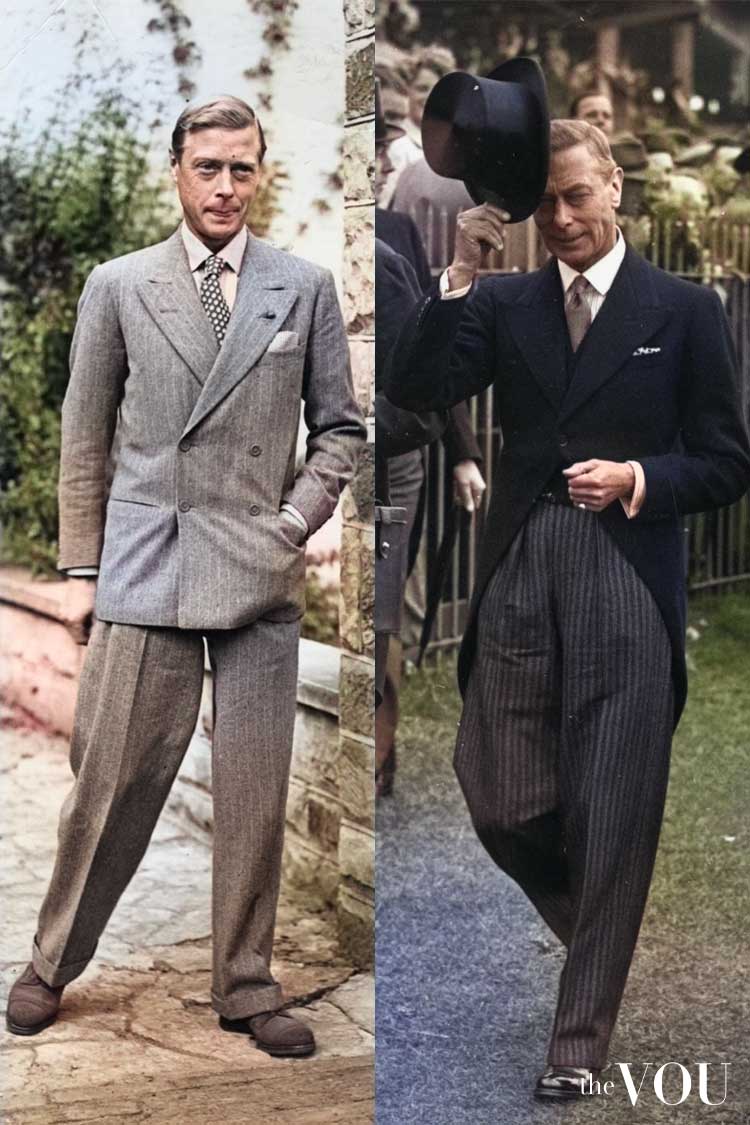
Wartime – utilitarian suits and military-inspired jackets from rationed fabrics in militaristic colours, influenced by World War II.
American Classic – high-waisted trousers and structured jackets with clean lines inspired by American culture.
Movie Star – elegant suits and dinner jackets reflecting the growing influence of Hollywood stars.
The New Look for Men – structured suits with broader shoulders reflecting the post-war optimism.
Zoot Suit – oversized jackets and wide-legged trousers with stripe motifs showcasing the rebellious youth.
1950s
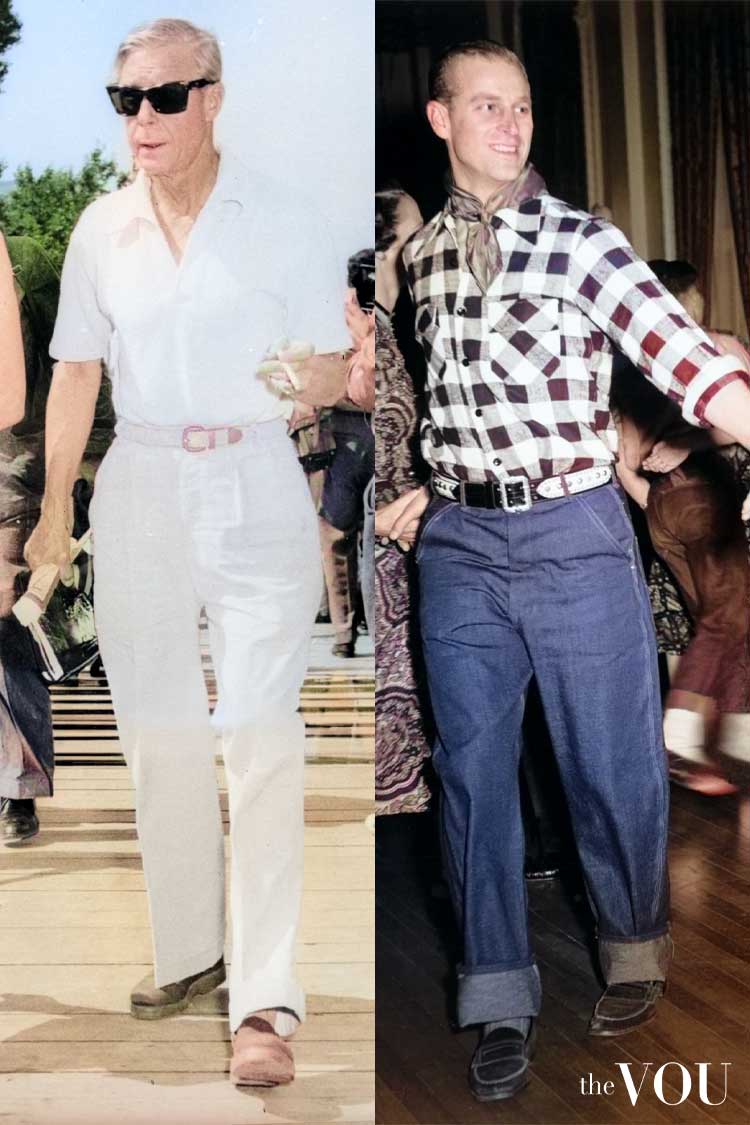
Mid-Century Modernism – tailored suits in abstract patterns showcasing a growing architectural influence among fashion designers.
Rockabilly – leather jackets, slim-fit jeans, and boots pointing to the emerging rock ‘n’ roll subculture.
Classic American – structured suits in conservative cuts – see Cary Grant’s influence.
Beatnik fashion – black turtlenecks assorted with berets, pointing to the emergence of a literary subculture.
Preppy fashion – Ivy League style chinos, navy blazers, loafers, and sweaters with tartan and argyle patterns showcasing British aesthetic roots.
1960s
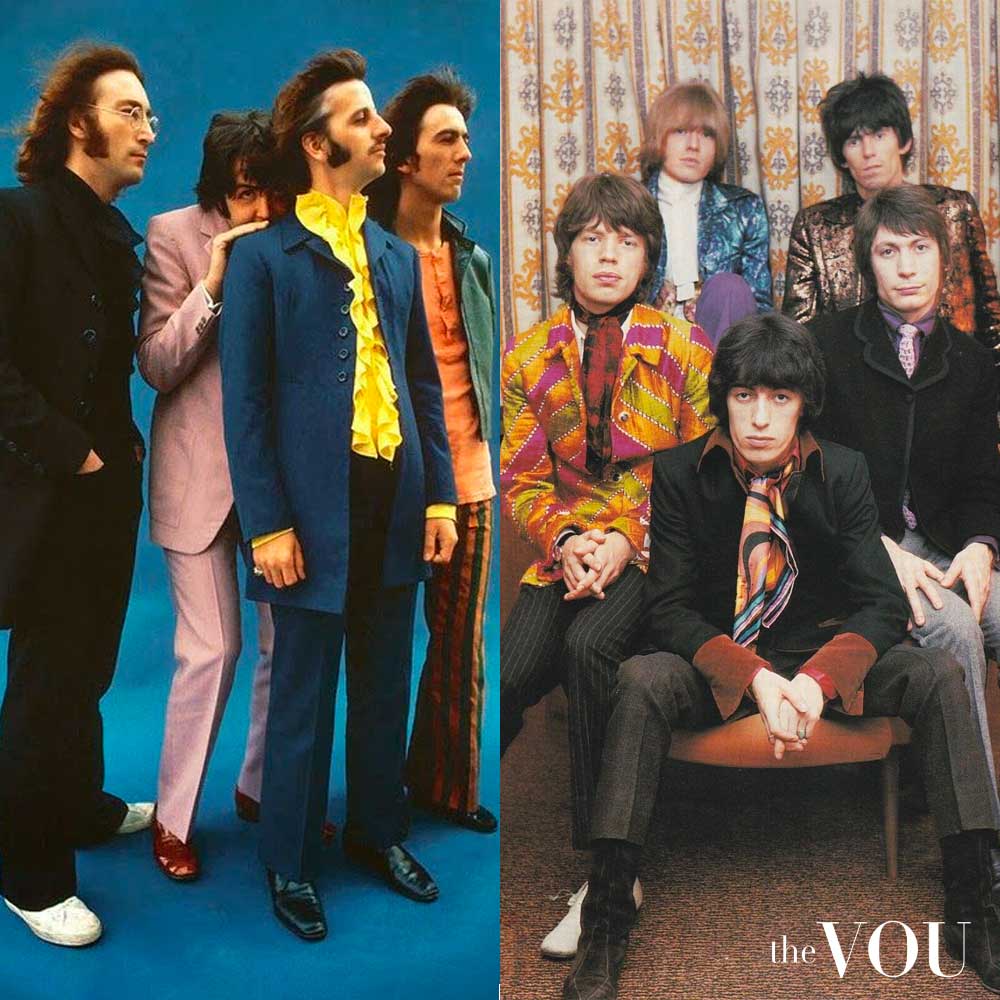
Mod Fashion – slim-fit suits, Chelsea boots, and parkas with bold geometric patterns as signs of growing feelings of rebellion against the status quo.
Hippie – tie-dye shirts, flared jeans, and accessories with floral and peace motifs showcasing a growing anti-war sentiment.
Space Age – futuristic designs; metallics, vinyl; space exploration fascination.
Carnaby Street – colourful suits and bold patterns depicting London’s artists and creatives.
Black Panther – all-black uniforms with berets and leather jackets as forms of political statement.
1970s

Disco – suits with wide lapels, platform shoes, and shirts in shimmering fabrics reflecting the growing disco subculture.
Punk Rock – ripped tees, tight jeans, leather jackets with anarchistic symbols, chains, and safety pins showcasing the subculture’s rebellious nature.
Bohemian fashion – loose shirts, bell-bottom pants with ethnic prints depicting the movement’s ‘free of societal boundaries’ ethos.
Goth fashion – black clothing with spiderweb and skull motifs and silver accessories inspired by Gothic rock musicians of those times.
Leisure – Leisure suits from polyester and shirts with wide collars, defining the casual menswear revolution.
1980s
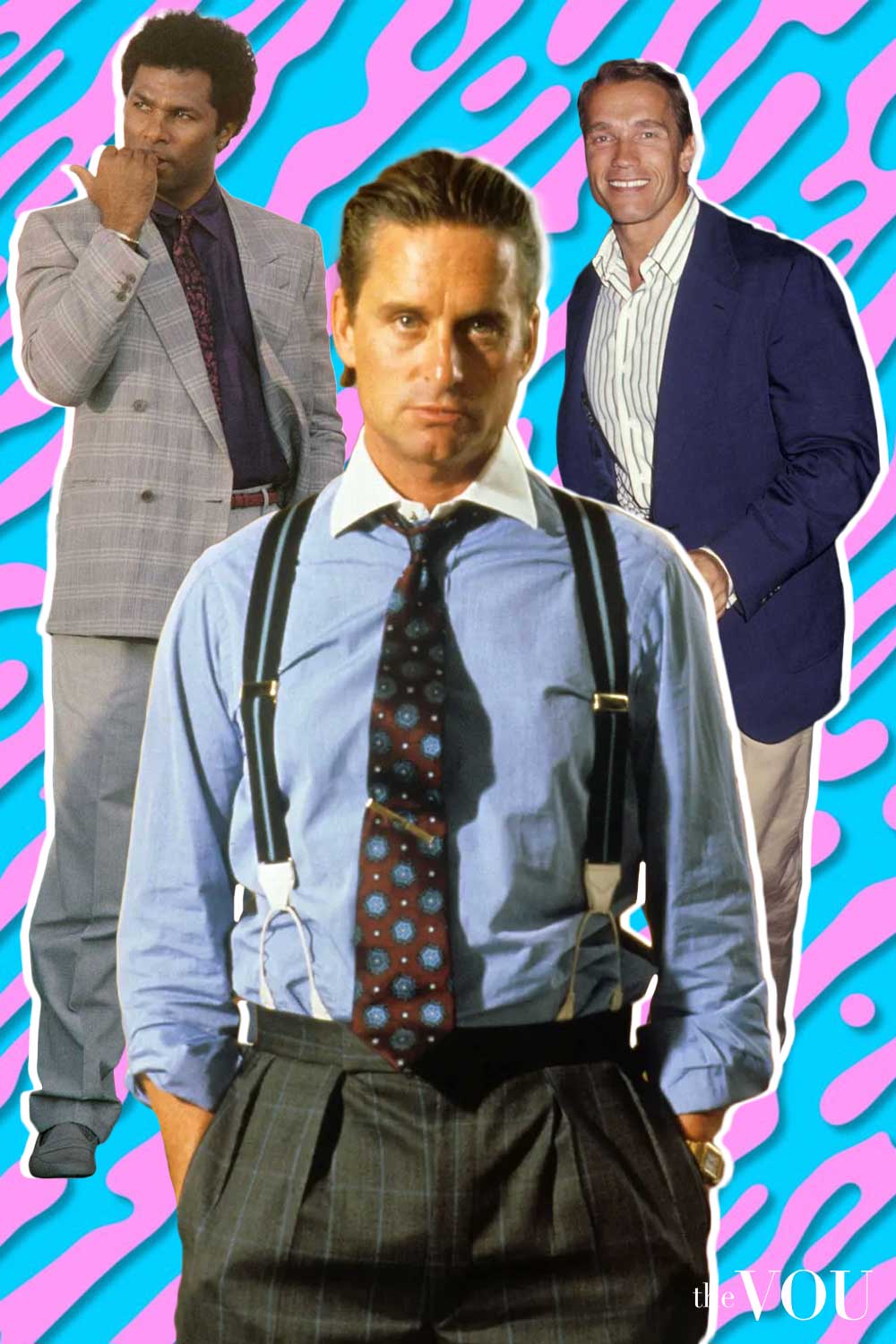
Power Dressing – suits with strong shoulders and pinstripes showcasing corporate success and ambition.
New Romanticism – ruffled shirts, velvet suits, and jackets with gothic motifs showcasing the nightclub culture.
Streetwear – tracksuits and baseball caps with graffiti prints pointing to the emergence of the hip-hop subculture.
Safari – khaki jackets and cargo pants with multiple pockets in African patterns.
Neo Preppy – colorful short chinos, polo shirts in pastel colours, and sleeveless sweaters in argyle patterns.
1990s
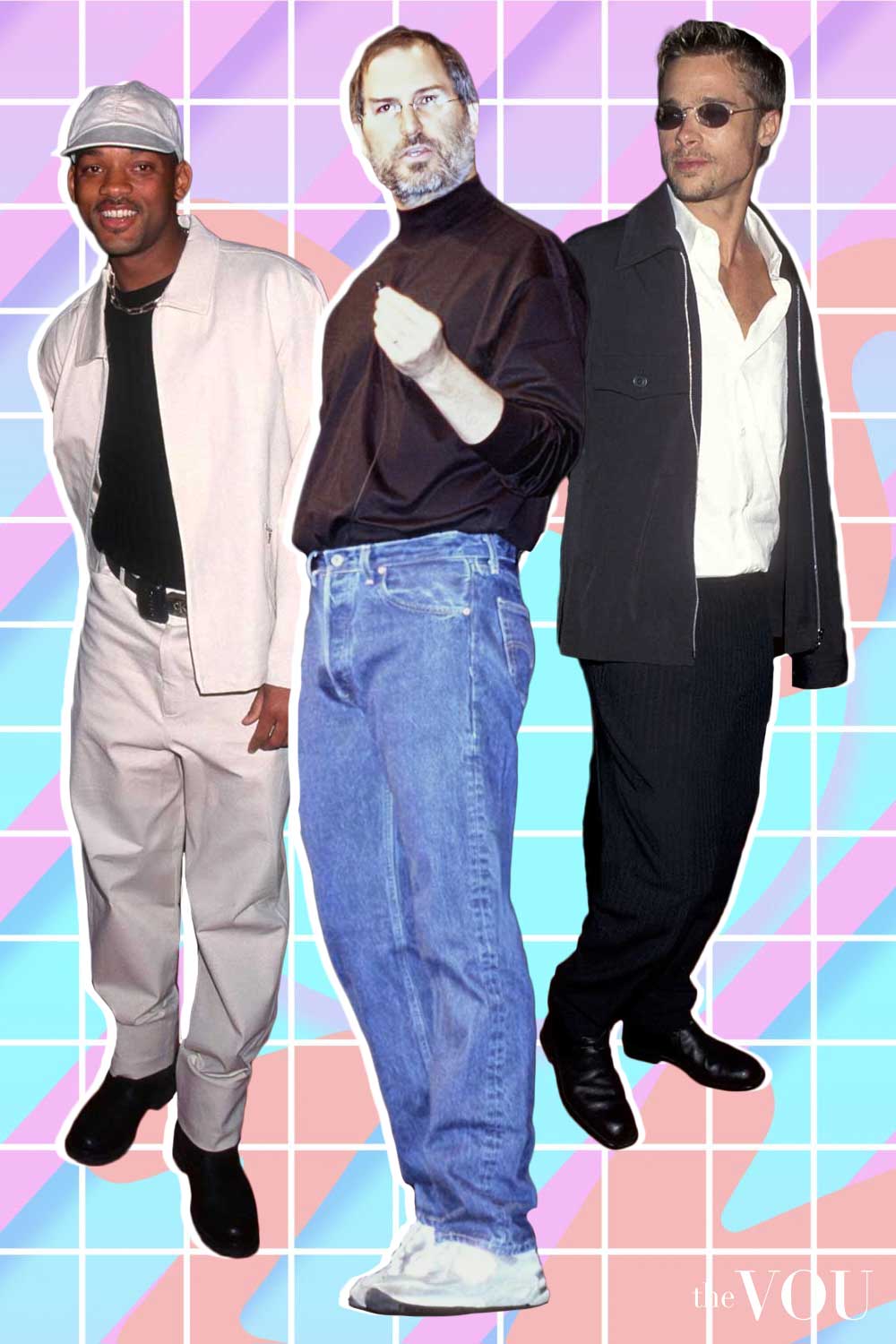
MTV Generation – baggy jeans, oversized t-shirts with slogan prints, and street-inspired accessories reflecting music video influence.
Grunge – flannel shirts, ripped jeans, tops in plaid patterns, and combat boots.
Hip-Hop – baggy jeans, baseball caps, loud logo t-shirts, and heavy golden chains reflecting the urban subculture.
Minimalist – clean-cut suits and simple garments in monochrome shades, depicting the emergence of minimalist fashion.
Y2K fashion – metallic fabrics, futuristic accessories, and tech-inspired patterns depicting the millennial tech optimism.
2000s
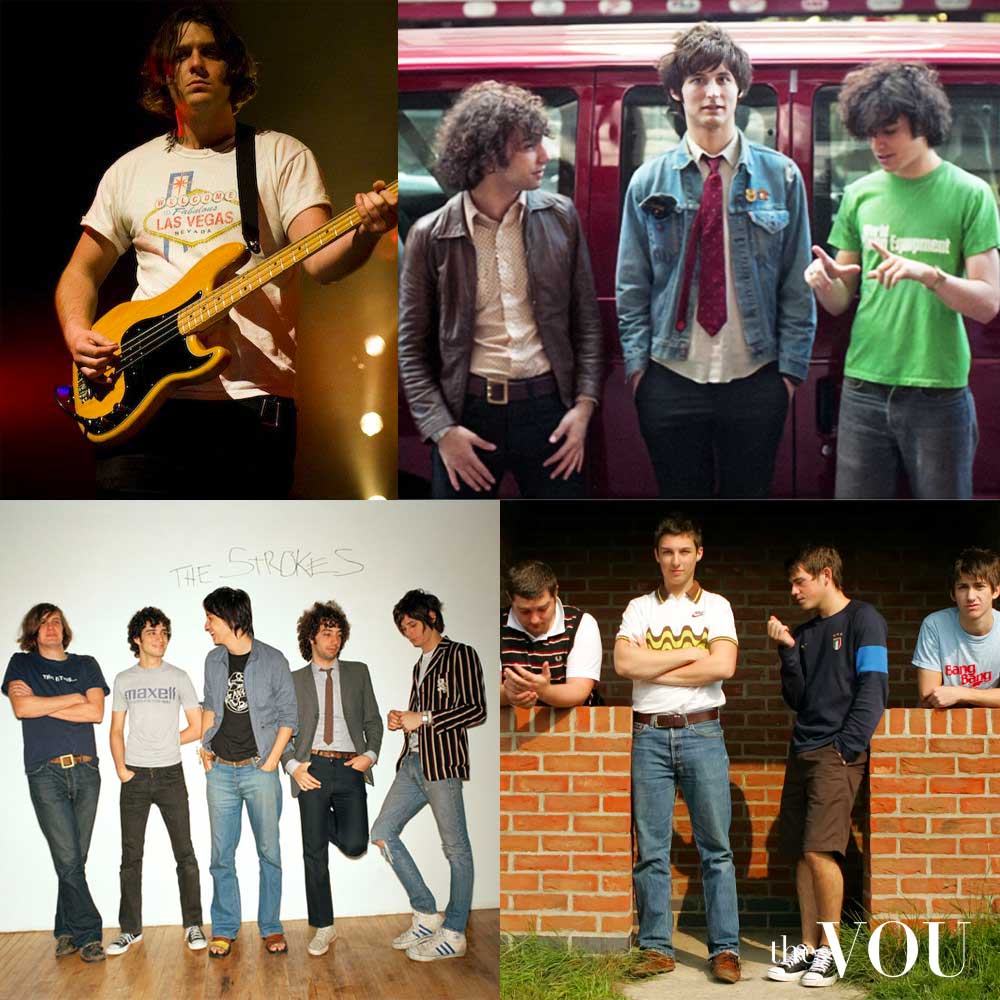
Indie Rock – skinny jeans, vintage t-shirts, and leather jackets inspired by independent music culture.
Emo – skinny jeans with studded belts and dark tops showcasing an emotive alternative to the punk subculture.
Designer Streetwear – luxury brand collaborations with street culture elements at the top of conspicuous consumption.
Hipster – vintage clothing with retro prints, ethnic pattern shirts, relaxed pants, and thick glasses depicting the subculture’s ironic vibe.
Athleisure – performance wear, technical fabrics, and comfortable sneakers depicting a growing fitness culture.
2010s
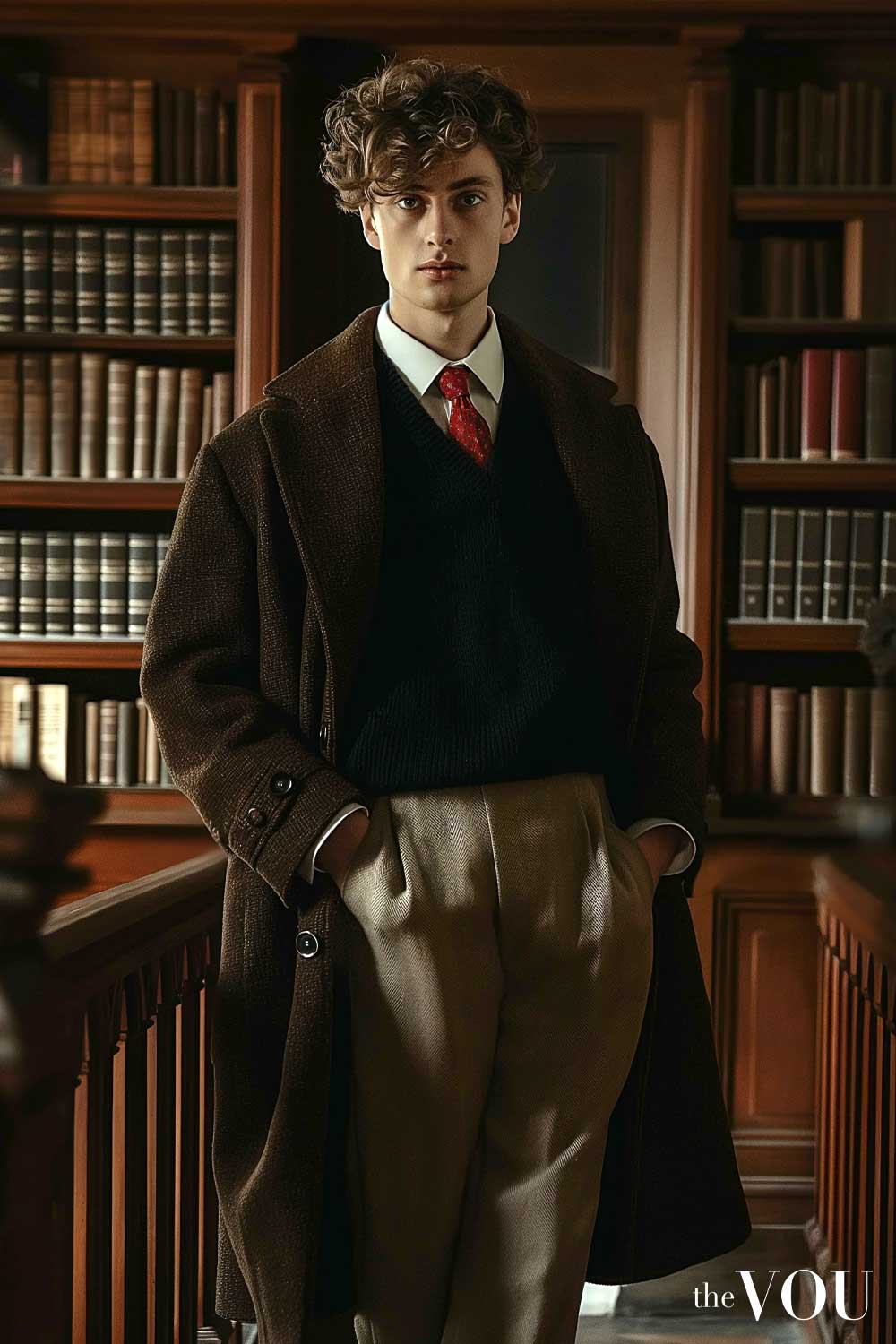
Normcore – normative dressing with unbranded clothes as an anti-fashion statement.
Tech Bro – minimal, comfortable clothing focused on functionality and subtle luxury.
Dark Academia – tweed blazers, wool trousers, and oxford shirts with preppy aesthetics in darker tones influenced by Gothic elements.
Streetwear Evolution – high-end streetwear mixing luxury brands with casual elements.
2020s

Sustainable Fashion – eco-conscious clothing made from sustainable materials with emphasis on ethical production.
Techwear – functional garments from smart materials and with cyber patterns showcasing technology integration.
Health-Conscious – Protective outfits and masks reflecting global health concerns.
Gorpcore – technical outdoor wear adapted for urban environments, mixing functionality with style.
Virtual Fashion – digital clothing made to be worn in augmented, virtual, and mixed-reality environments – at least for now.
References
- René Wellek and Austin Warren
- Adolf Loos: Das Werk des Architekten
- History of the Art of Antiquity
- The Gothic: literary sources and interpretations through eight centuries
- The Globalization of Renaissance Art
- Mme. de Pompadour as a Patron of the Visual Arts
Take the First Step With The VOU’s Styling Quizzes
Start your style journey with our free resources. First, take our Face Shape Quiz to confirm your face shape and receive initial styling guidance.
Then, discover your most flattering colours with our Seasonal Colour Analysis Quiz.
Learn which garment styles suit you best through our Body Shape Quiz, and find your ideal personal style with our Fashion Style Quiz.
Transform Your Image with The VOU’s Professional Guidance
For comprehensive image development that goes beyond hat selection, The VOU offers expert styling services to ensure your complete look projects success and sophistication.
Our Professional Face Shape Analysis package provides you with a scientific analysis of your exact face shape, personalised hairstyle recommendations, customised facial hair styling guide, expert eyewear selection guidance, and detailed grooming recommendations tailored to your unique features.
For the most comprehensive transformation, consider our Complete Image Transformation Package.
This premium service includes our Professional Face Shape Analysis, Seasonal Colour Analysis, Body Shape Analysis, Fashion Style Analysis, Wardrobe Curation Guide, and Personal Brand Development.
Through this complete package, you’ll develop a cohesive style that communicates success and sophistication across all aspects of your appearance.
With years of expertise in high-end fashion collabs and a PhD in Sustainable Fashion, Ru specialises in eco-luxe wardrobes for the modern gentleman seeking understated refinement.
After years of managing hundreds of fashion brands from London's office of a global retailer, Mandy has ventured into freelancing. Connected with several fashion retailers and media platforms in the US, Australia, and the UK, Mandy uses her expertise to consult for emerging fashion brands create top-notch content as an editorial strategist for several online publications.
A passionate advocate for inclusivity and diversity, Aidan is the driving force behind The VOU as its Editorial Manager. With a unique blend of editorial acumen and project management prowess, Aidan's insightful articles have graced the pages of The Verge, WWD, Forbes, and WTVOX, reflecting his deep interest in the dynamic intersection of styling with grooming for men and beyond.
With over twenty years of front-row fashion and styling events, collabs with haute-couture houses, and a PhD in Luxury Fashion, Laurenti is an expert in crafting personalised looks that depict old-money sophistication.


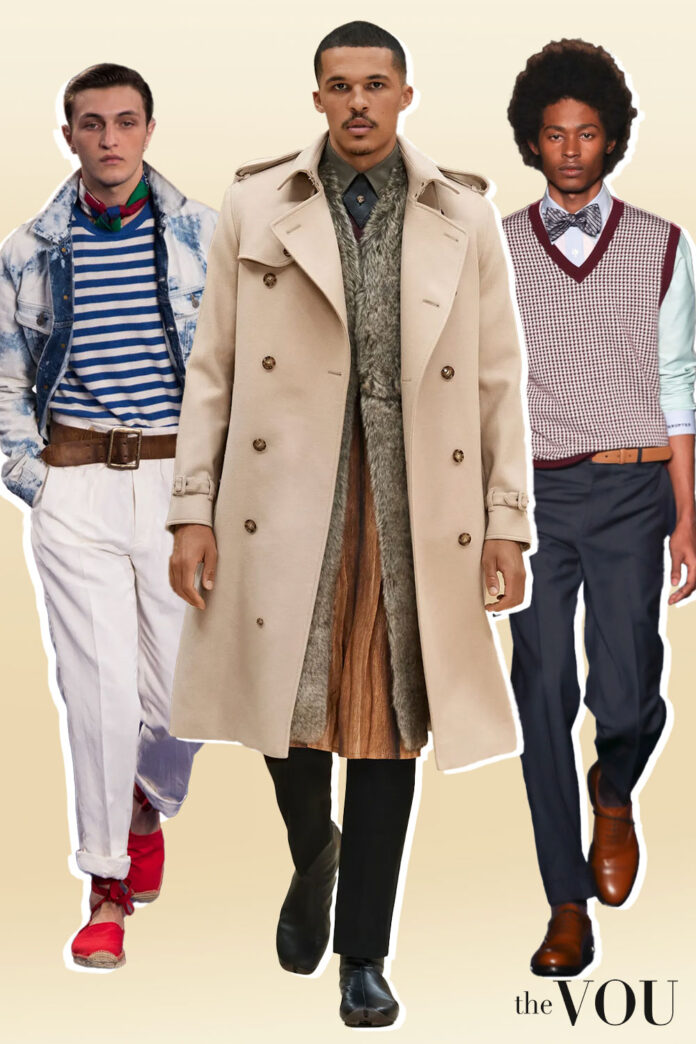
A gem for anyone who’s on the shorter side and wants to nail that effortless off-duty model vibe! I love the practical tips you shared—especially about proportions and layering. It’s so empowering to see style advice that really works for different body types. Can’t wait to try out some of these looks and feel confident!
J’adore votre style